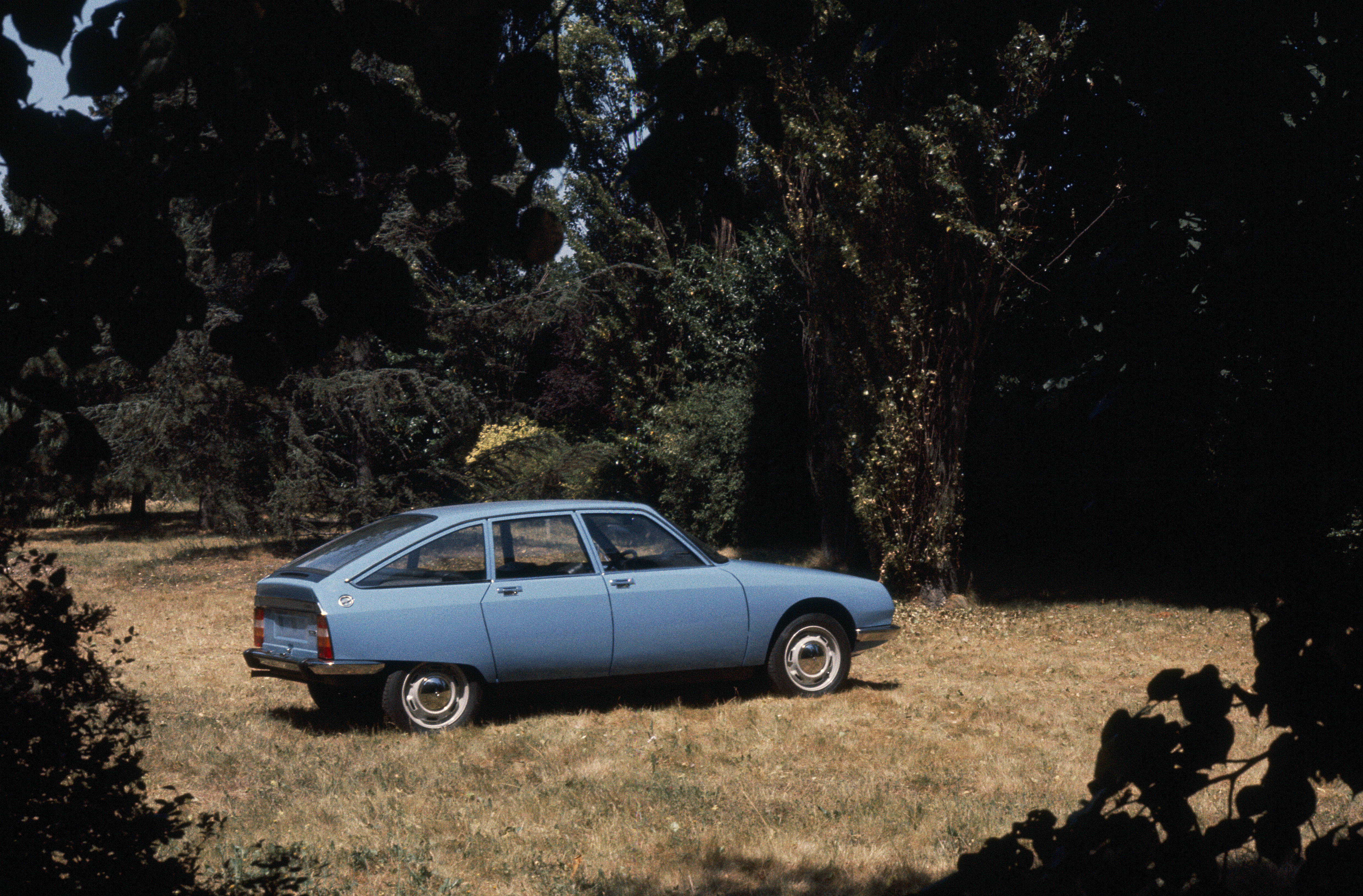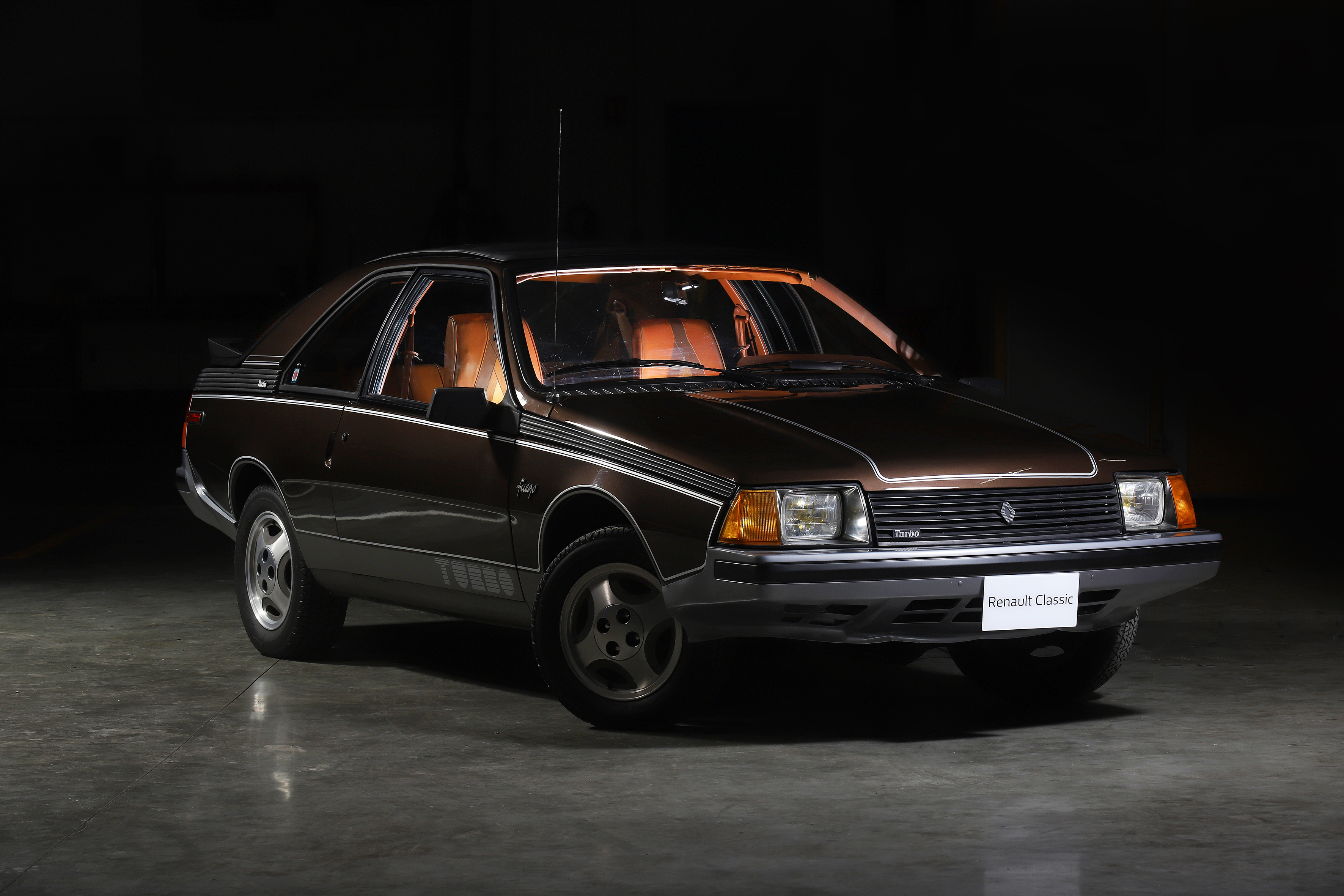Celebrating the genius of the late Robert Opron
The French auto designer and engineer Robert Opron died on 29 March 2021, at the age of 89

Perhaps more than any other designer, Robert Opron’s work came to embody the qualities of idiosyncrasy and individuality in French car design, helping set the output of the country’s factories at odds with convention. In particular, his long association with Citroën took the company’s engineering-infused brilliance to another level. One of his first roles on joining the company was re-styling the legendary DS, designed by Citroën’s head designer Flaminio Bertoni with André Lefebvre and originally launched in 1955. After the Italian designer died in 1964, Opron continued his legacy, streamlining the DS’s appearance with the Series 3 car in 1967. Regularly voted as one of the boldest and most influential car designs of all time, the redesign of the DS developed Bertoni’s baroque forms and kept them feeling futuristic and advanced.

1973 Citroën DS21, one of the last examples to be made
Opron was born in 1932 and grew up in Africa. From 1952, he studied at Paris’s École des Beaux-Arts, where he took courses in painting, sculpture and architecture, the latter under the tutelage of the great modernist innovator Auguste Perret (who had given Le Corbusier his first architectural job some three decades before). Following his studies, Opron worked first in aeronautical design, then for the French car maker Simca. His designs included the 1958 Simca Fulgur concept, a flying saucer-style bubble car intended to preview the roads of the 21st century. Its aviation influences were all too clear, from the passenger canopy to the fighter jet-like rear spoiler.
After Simca shuttered its design department, Opron spent a couple of years working on consumer goods before joining Citroën in 1962. He took over the design department after Bertoni’s death and found himself at the helm of a company willing to take stylistic risks despite its wavering finances. In 1974, the company went bankrupt, partly due to its ill-fated acquisition of Italian sports car maker Maserati in 1968. The union was meant to enhance Maserati’s technical ability and propel Citroën into the luxury realm. The car that resulted, the majestic Citroën SM of 1970, was Opron’s masterpiece.


Above, 1958 Simca Fulgur Concept (Image from ‘Robert Opron, L’Automobile Et L’Art’ by Peter Pijlman, Sagitta Productions, Netherlands, 2002). Below, The 1970 Citroën SM was Opron's masterpiece. Introduced in 1970, it was the ultimate hi-tech grand tourer
The SM remains quite unlike any luxury car ever built. A large two-door four-seater, it had its origins in a sporting variant of the DS that was prototyped in the early 60s but never produced. Opron put everything into the SM, from the fully glazed front end, through to the tapering rear with its faired-in wheels and large tailgate. The SM was striking and stylish, and although it shared an engine with its Maserati counterparts, it was a fast grand tourer, rather than a sports car. Opron’s design dovetailed perfectly with Citroën’s technical innovations, which evolved from the DS and included the company’s complex hydro-pneumatic suspension and self-centering steering that felt impossibly light at low speeds and firmed up once you got underway.

Two Coachbuilt Citroen SM Presidentials were built by Chapron for President Georges Pompidou in 1971 - they were first used for Queen Elizabeth's state visit to France in 1972
The 1974 bankruptcy resulted in Citroën being merged with its rival Peugeot to form PSA, Peugeot Société Anonyme. The massive factory at Quai André-Citroën was closed after nearly 60 years of operation and the last of the 13,000 SMs built had to be assembled elsewhere, as did the final year of DS production. Ironically, the SM aside, Opron’s designs had proved extremely successful. In particular, his replacement for the DS, the Citroën CX, was voted European Car of the Year in 1975. The CX was a worthy replacement for the DS, with space-age looks inside and out and the same suspension and steering tech as the SM. 1.2 million CXs were built and it remained in production until 1991, advertised by Grace Jones, adapted as a limousine by heads of state, stretched to a six-wheeler, transformed into a convertible and even favoured by camera operators who loved the car’s smooth ride. Stylistically, it fused the sleek fuselage of the SM with the neat shape of the earlier, smaller Citroën GS, another masterful Opron design that was also a big seller, with over 2m made.

An early example of the first generation Citroën CX

Citroën CX camera car, developed by the BBC

The smaller Citroën GS preceded the CX model
The 1975 merger left Opron without a job, so he moved to head up design at Renault, where his designs included the hugely popular Renault 9 and 11 and the idiosyncratic Renault Fuego sports coupé of 1980. Opron is one of a select number of car designers who brought an architectural quality to their work, eschewing the clichéd perception of automotive beauty in favour of a more rational approach, shaped by aerodynamics and the requirements of the passengers. Opron’s interiors often drew parallels with contemporary furniture, and though his work was rarely intended to be ‘luxurious’ in the contemporary sense, it had an individuality that set it apart from the pack.

The 1982 Renault Fuego Turbo, show here as a USA model
Without Robert Opron, and the DS and SM in particular, it seems unlikely that Citroën would have undertaken to create the DS sub-brand in 2009. DS Automobiles is now a standalone company with a mission to bring Gallic luxury to electric vehicles, together with smooth riding, stylish designs. With Peugeot and Citroën both working hard at revitalising their image, there’s hope once more for design that is both far-sighted and popular. Even so, Opron’s genius is hard to translate into the modern era, thanks to tighter margins, a demanding and varied global marketplaces, and far less tolerance for deviation. Here’s hoping his legacy survives into the electric age.

Citroën SM photographed by Valentin Jeck outside the Architect's and Artist's house at the foot of the Üetliberg by AFGH Architekten, published in Wallpaper* 080, July/August 2005
Receive our daily digest of inspiration, escapism and design stories from around the world direct to your inbox.
Jonathan Bell has written for Wallpaper* magazine since 1999, covering everything from architecture and transport design to books, tech and graphic design. He is now the magazine’s Transport and Technology Editor. Jonathan has written and edited 15 books, including Concept Car Design, 21st Century House, and The New Modern House. He is also the host of Wallpaper’s first podcast.
-
 The best Miami hotels to book for design-minded travellers
The best Miami hotels to book for design-minded travellersIn town for Art Basel or Design Miami? These are the city’s most stylish stays, whether you’re looking to hit the beach or have a spa day
-
 Enter a metallic, maximalist playground for pasta lovers in Barcelona
Enter a metallic, maximalist playground for pasta lovers in BarcelonaRelleno’s first flagship restaurant pushes casual dining into a chrome-lined future, wrapping guests in a sculptural grid that riffs on the geometry of filled pasta
-
 This Alpine chalet rejects the ‘modern ski’ aesthetic to embrace art deco
This Alpine chalet rejects the ‘modern ski’ aesthetic to embrace art decoOriginally designed by architect Henry Jacques Le Même, a key figure in shaping the Alpine style, Le Sarto in Megève, France, has been captivatingly transformed by interior architecture studio Claves
-
 Fancy owning a piece of French automotive history? Bid in The Renault Icons Auction
Fancy owning a piece of French automotive history? Bid in The Renault Icons AuctionRenault is paring back its substantial collection of historic automobiles by auctioning off duplicate models. We present 14 of the finest lots
-
 The 504 Pikes Peak is Peugeot Design Lab’s radical reinvention of the classic family wagon
The 504 Pikes Peak is Peugeot Design Lab’s radical reinvention of the classic family wagonPeugeot unveils a trio of concept cars that celebrate history, music and design, with in-car vinyl, carbon bodywork and outrageous performance
-
 Renault celebrates new R4 EV and electric mobility with TheArsenale and four French start-ups
Renault celebrates new R4 EV and electric mobility with TheArsenale and four French start-upsRenault's '4 Movements' accompanied the R4 E-Tech at the 2024 Paris Motor Show; the clutch of sleek machines will bring innovative electrification to air, sea and water
-
 In celebration of Bruno Sacco, the man who brought order and elegance to Mercedes design
In celebration of Bruno Sacco, the man who brought order and elegance to Mercedes designThe car designer Bruno Sacco has died. Sacco shaped Mercedes-Benz design for nearly a quarter of a century. We look back on his impressive legacy
-
 DAB Motors celebrates Olympic glory with five unique custom-designed electric motorbikes
DAB Motors celebrates Olympic glory with five unique custom-designed electric motorbikesThe French electric motorbike brand has created five sport-inspired editions as a way of marking Paris 2024 and the arrival of DAB Custom Studio
-
 In memoriam: automotive designer Marcello Gandini (1938-2024)
In memoriam: automotive designer Marcello Gandini (1938-2024)As the man behind the form of the modern supercar, Marcello Gandini was hugely influential. We look back at some of his most accomplished designs
-
 Remembering the life and work of designer Tom Karen, who has died at the age of 96
Remembering the life and work of designer Tom Karen, who has died at the age of 96Tom Karen (1926 – 2022) was an industrial designer who delighted in the power of design to transport and transform, and shaped some of the most idiosyncratic icons of the 1960s, 1970s and beyond
-
 Peugeot’s sparky 308 gets hybrid power and handsome lines
Peugeot’s sparky 308 gets hybrid power and handsome linesThe Peugeot 308 proves that mass-market design needn’t be dull, blending hybrid power with sharp lines and excellent detailing